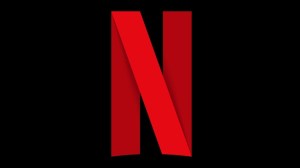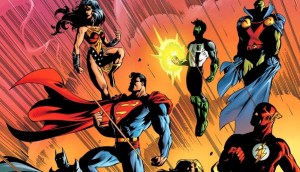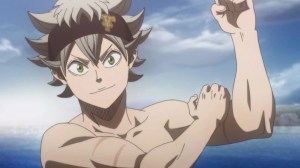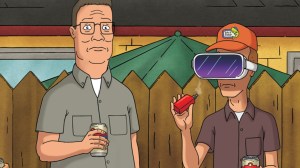
A new Ant-Man & The Wasp series is being launched this week by writer Mark Waid and artist Javier Garron, just in time for the new Marvel Studios movie of the same name. The characters in both the comic and movie are very different than the original Marvel Comics duo to hold those names though. The original Ant-Man and Wasp were alter-egos for Hank Pym and Janet van Dyne, respectively, when introduced in Tales to Astonish in 1962. While the pair have remained regular members of The Avengers and Marvel Comics’ many ongoing adventures, their alter-egos and powers have rarely remained their own. As early as 1969, Pym was succeeded by his teammate Hawkeye who took the role of Goliath in The Avengers. In the successive decades, an enormous family tree has grown from the origins of Ant-Man and The Wasp.
Videos by ComicBook.com
While both heroes are remembered fondly as founding Avengers and important early Marvel Comics superheroes, they don’t possess the same staying power as similar figures like Captain America, Thor, or Iron Man. While these heroic roles seemingly always return to their original possessors, titles like Giant-Man, Ant-Man, and Wasp seem much more fluid in nature. So what is it about this pair of characters that makes them both iconic and legacy-driven?

Science and Technology
One of the most important elements in this legacy is that the powers and abilities of Ant-Man and The Wasp are grounded in science, and thus transferable. All of Hank Pym’s many inventions are not tied to a specific user, instead they are inventions that can be worn or utilized by anyone with access to them. This includes the shrinking and growing capabilities of Pym Particles, as well as his special technology for communicating with ants. This is how Hawkeye became the first new hero to grow when Ant-Man gifted his friend Pym Particles. It’s also how so many subsequent heroes have found their way into the role of Ant-Man, Giant-Man, The Wasp, or several other identities used by this duo. Scott Lang first stole Hank Pym’s Ant-Man gear, while Raz Malhotra was gifted the suit and science to become Marvel Comics’ newest Giant-Man. This is also what allows multiple iterations of the same characters to exist simultaneously, meaning Janet van Dyne can remain part of the Marvel universe even as Nadia van Dyne flies through her own series.
This basis in technology extends to Hank Pym’s more nefarious legacy that began with the creation of Ultron. His ambitious construction of Earth’s first artificial intelligence led to what many real world scientists have predicted: replication of that intelligence. Ultron’s very existence necessitates the creation of new versions of Ultron as well as offspring, like The Vision, Victor Mancha, and Jocasta. The very nature of invention is to lead to new inventions, and that has been the legacy of all of Pym’s technology.

Passing the Torch
Ant-Man and The Wasp are far from the only superheroes able to pass along their own abilities. Iron Man and other tech-based superheroes have created plenty of fill-in and spin-off roles. Even mystical characters like Thor and Doctor Strange have managed to find occasional successors. There has to be something else about this pair that makes them special, and that probably comes down to tradition. While Hawkeye’s role as Goliath is not fondly remembered by many modern fans, it is one of the earliest examples of a major Marvel superhero passing their role along for a sustained period of time. It’s the moment that a tradition was established. When Scott Lang stole the Ant-Man uniform and then assumed the role for more than a decade, it came as no surprise given both Hank and Janet’s willingness to share their superhero alter-egos.
The same tradition was established early in The Avengers with the introduction of The Vision in 1968. His first appearance made it clear that not only would more robots emerge from Hank Pym’s original creation, but that Ultron himself would never be truly defeated. This is a moment of foreshadowing that continues to bear fruit in modern Marvel Comics as Hank Pym is bound to Ultron in a shared form as they travel through space. It also highlights what is important about the roles originally created by Ant-Man and The Wasp: The roles were every bit as important as the people. Even with Hank Pym taking a villainous turn, the names of Ant-Man and Giant-Man have continued to be important for The Avengers and Marvel Comics as a whole. They represent underdog heroes, scientific adventurers, and explorers of the unknown. Even Pym’s worst moments can’t undermine the legacy that he created when he first put on the Ant-Man helmet.

Family Tree
When you look at Hank Pym and Janet van Dyne, Ant-Man and The Wasp, you’re ultimately looking at the roots of the greatest family tree in all of Marvel Comics. There is no other hero who has built the same sort of legacy as this original pairing. Tracing their own identities through the years reveals the creation of numerous superheroes. Some became Ant-Man, Giant-Man, The Wasp, Yellowjacket, or some related-identity for only a few years, while others have remained in those roles so long as to make them their own. Scott Lang and Nadia van Dyne are every bit as essential to the Marvel Comics stories of today, but neither would exist without the original heroes. The same goes for the filmed version of Scott and his partner Hope van Dyne who have brought this sense of legacy to Marvel Studios as the second iterations of their own characters.
The inclusion of Ultron and his many creations, including the eventual resurrection of Avengers like Wonder Man, make this legacy even more potent. At any given point in Avengers history, there is at least one hero on the team who would not be present were it not for the original work of Ant-Man and The Wasp. While Captain America, Iron Man, and Thor may be seen as the core trio of Avengers, it’s this diminutive pair who have had the greatest impact on the team’s history. No matter where you look in Marvel Comics, the legacy of Ant-Man and The Wasp is present, in technology, heroic titles, and family bonds. It’s truly a tale to astonish.









